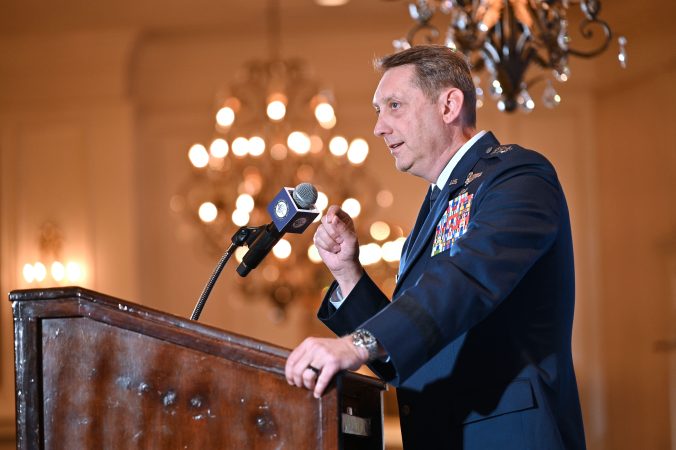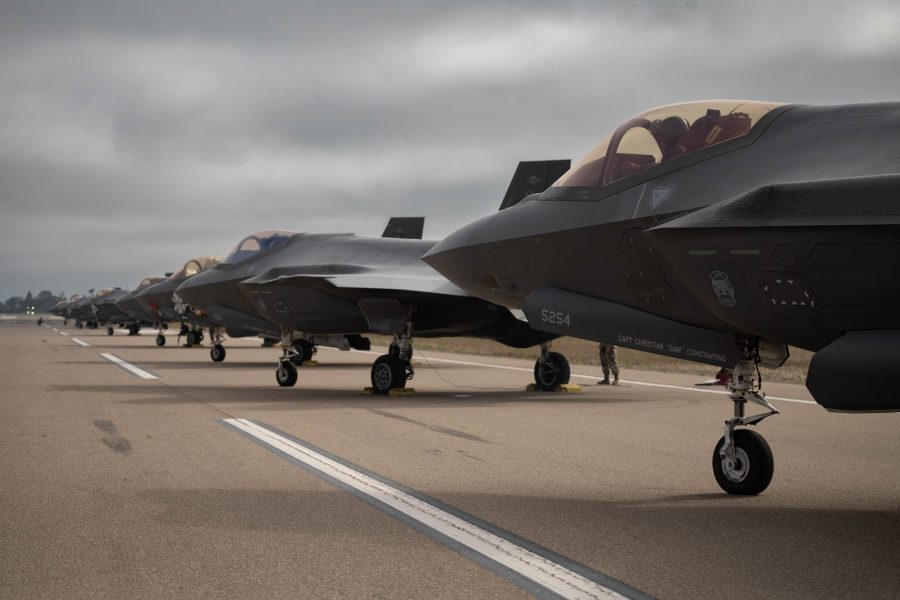As the Air Force completes a highly anticipated force design—its first real overhaul in a generation—the leaders overseeing the work drew a narrow distinction over how the resulting future force will be funded.
“I would say that it really is fiscally informed, not constrained,” said Lt. Gen. David A. Harris, deputy chief of staff of Air Force Futures, during a keynote address Nov. 13 at the inaugural Airpower Futures Forum, produced by AFA’s Mitchell Institute for Aerospace Studies.
“I can build you the world’s best Air Force—we as a team can build the world’s best Air Force—but I’m here to tell you, we probably can’t afford it,” Harris said. “What we can do, … is actually develop a logic and rationale … to argue for additional resources about why these systems need to come together.”
Speaking earlier in the day, Chief of Staff Gen. David W. Allvin, said the new force design is focused on ensuring lethality, survivability, mass, and connectivity.
Harris intentionally did not mention China in his keynote, noting that an effective force design must be adaptive and able to evolve as threats and technology change. Similarly, he said he began the work by thinking about force design in relation to the National Defense Strategy, only to be asked to remove such references as the force design should be a “living document” that overarches current strategy as it relates to threats or conflict areas.
Instead, the force design is focused on identifying the best mix of capabilities, systems, technologies, and personnel to achieve all of the Air Force’s five core functions:
- Air superiority
- Global strike
- Rapid global mobility
- Command and control
- Intelligence, surveillance, and reconnaissance
Asked how the force design could evolve if the Air Force does not acquire the Next Generation Air Dominance platform, once envisioned as the replacement for the F-22 Raptor, Harris said it would not change the overall design, but it would “challenge the way that you would actually execute a mission area.”
The Air Force was supposed to make a selection for the builder of a crewed NGAD combat jet this year but paused the process in the summer rather than commit to a winner. Air Force Secretary Frank Kendall said he made that decision because the threat picture had changed, technology had advanced, and he wanted to be sure that the design he was looking at was still what the Air Force needed and would need in the future.
Now USAF leaders are in the midst of a major program review, with a panel of experts including former Chiefs of Staff Gen. John Jumper, Gen. Norton Schwartz, Gen. David Goldfein, and former Vice Chairman of the Joint Chiefs of Staff Gen. Joseph Ralston, reviewing the findings.

Mitchell Institute Airpower Futures Forum at Army Navy Country Club on Nov. 13, 2024, in Arlington, Va. Photo by Mike Tsukamoto/Air & Space Forces Magazine
Harris said the NGAD decision would impact force structure and other development. “There’s probably multiple force structures, some of them may not include any of that, but I’ll tell you,” he said. “It’s less about the platform and more about the systems and how they are coming together. How do you actually replicate the effects that system would have in Mission Area One or Mission Area Two? There’s a lot of ways that we can actually achieve air superiority.”
Allvin and Harris both spoke in terms of capabilities for three “Mission Areas,” which refer not tp the area those capabilities would operate in, but rather the locations from which they would launch from:
- Mission Area 1: Capabilities that can be based or positioned close to an adversary, and can deliver concentrated effects against adversary forces while operating in those close confines.
- Mission Area 2: Long-range capabilities based far from potential adversaries, but able to launch from a distance and penetrate a contested environment to deliver precise strikes or effects.
- Mission Area 3: General-purpose capabilities, which can be positioned in a variety of locales, and that can provide mass and flexibility for a variety of uses. These capabilities could also support Mission Area 1 and 2 capabilities under certain circumstances.
Harris did not indicate one way or another whether the force design requires the manned NGAD platform, saying only that the Air Force has “not given up on air superiority” and that the service still needs the capabilities that NGAD represents.
“I think the numbers of it matter,” he said, referring to the estimated cost of a manned next-gen fighter, which Kendall has pegged at between $200 million and $300 million. “If you’re going to overinvest in one area, then I need to see where you are going to be taking hits from, then I think that’s where the mission areas, and what that threat looks like, and the intensity of that threat actually matter.”
But, he added, “There could be a time when I want to invest more in the C5ISR … and maybe less in some of the other three” core capabilities, Harris said. “There’s a framework here that we’re trying to describe.”
This is where the cost comes into the picture, he explained. “It helps us be fiscally informed about what capabilities we want and how many, the quantity, of that,” Harris said.

